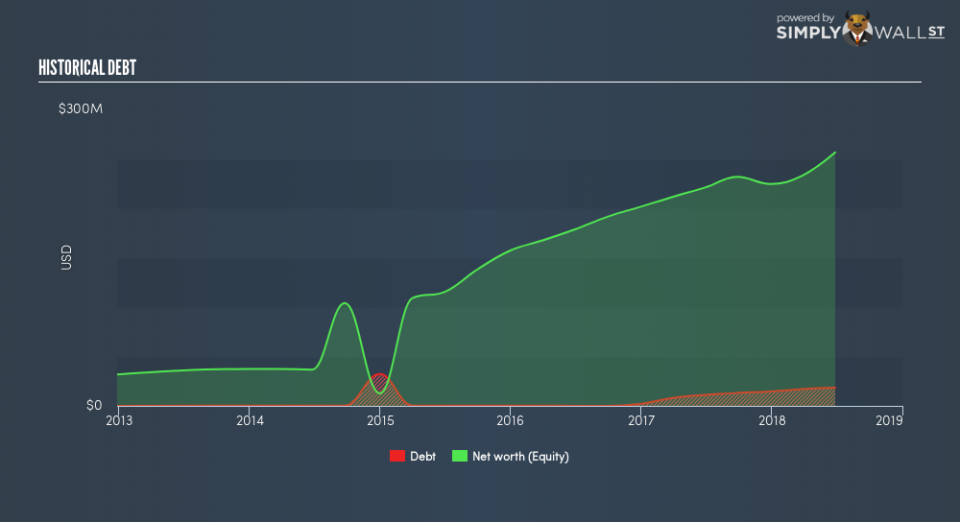Why Shake Shack Inc (NYSE:SHAK) Is A Financially Healthy Company

Small-cap and large-cap companies receive a lot of attention from investors, but mid-cap stocks like Shake Shack Inc (NYSE:SHAK), with a market cap of US$2.12b, are often out of the spotlight. However, history shows that overlooked mid-cap companies have performed better on a risk-adjusted manner than the smaller and larger segment of the market. This article will examine SHAK’s financial liquidity and debt levels to get an idea of whether the company can deal with cyclical downturns and maintain funds to accommodate strategic spending for future growth. Don’t forget that this is a general and concentrated examination of Shake Shack’s financial health, so you should conduct further analysis into SHAK here.
See our latest analysis for Shake Shack
Does SHAK produce enough cash relative to debt?
Over the past year, SHAK has ramped up its debt from US$11.2m to US$18.3m , which is mainly comprised of near term debt. With this rise in debt, SHAK’s cash and short-term investments stands at US$92.3m for investing into the business. On top of this, SHAK has produced US$78.0m in operating cash flow in the last twelve months, resulting in an operating cash to total debt ratio of 425%, indicating that SHAK’s operating cash is sufficient to cover its debt. This ratio can also be a sign of operational efficiency as an alternative to return on assets. In SHAK’s case, it is able to generate 4.25x cash from its debt capital.
Does SHAK’s liquid assets cover its short-term commitments?
At the current liabilities level of US$38.8m liabilities, it appears that the company has maintained a safe level of current assets to meet its obligations, with the current ratio last standing at 2.63x. Usually, for Hospitality companies, this is a suitable ratio as there’s enough of a cash buffer without holding too capital in low return investments.
Does SHAK face the risk of succumbing to its debt-load?
With a debt-to-equity ratio of 7.2%, SHAK’s debt level is relatively low. This range is considered safe as SHAK is not taking on too much debt obligation, which can be restrictive and risky for equity-holders. We can test if SHAK’s debt levels are sustainable by measuring interest payments against earnings of a company. Ideally, earnings before interest and tax (EBIT) should cover net interest by at least three times. For SHAK, the ratio of 37.82x suggests that interest is comfortably covered, which means that lenders may be inclined to lend more money to the company, as it is seen as safe in terms of payback.
Next Steps:
SHAK has demonstrated its ability to generate sufficient levels of cash flow, while its debt hovers at a safe level. In addition to this, the company exhibits proper management of current assets and upcoming liabilities. This is only a rough assessment of financial health, and I’m sure SHAK has company-specific issues impacting its capital structure decisions. I recommend you continue to research Shake Shack to get a better picture of the stock by looking at:
Future Outlook: What are well-informed industry analysts predicting for SHAK’s future growth? Take a look at our free research report of analyst consensus for SHAK’s outlook.
Historical Performance: What has SHAK’s returns been like over the past? Go into more detail in the past track record analysis and take a look at the free visual representations of our analysis for more clarity.
Other High-Performing Stocks: Are there other stocks that provide better prospects with proven track records? Explore our free list of these great stocks here.
To help readers see past the short term volatility of the financial market, we aim to bring you a long-term focused research analysis purely driven by fundamental data. Note that our analysis does not factor in the latest price-sensitive company announcements.
The author is an independent contributor and at the time of publication had no position in the stocks mentioned. For errors that warrant correction please contact the editor at editorial-team@simplywallst.com.

